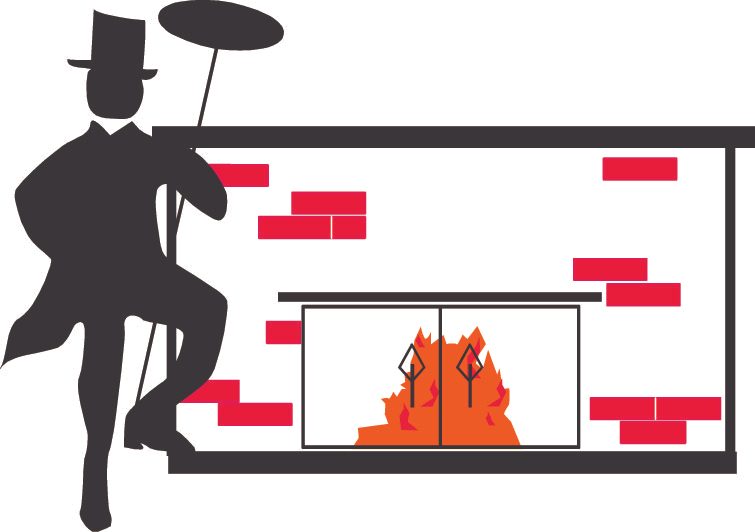A freestanding stove is installed into a masonry flue or into a Class A-type chimney (a Class-A-type chimney is an insulated metal chimney.). If the stove is to be vented into a masonry flue, the flue should be inspected in order to ensure that the flue tiles are not cracked or separated and that they meet the current building codes and standards for such an installation. The flue size must match the collar size of the stove or be slightly larger in order to ensure proper drafting for the stove. Clearances to combustibles must be maintained for the stove to avoid igniting nearby combustible materials.
Each manufacturer of wood stoves has specific guidelines for clearances such as how close to a wall the stove can be installed and what size your minimal floor protection should be, as well as the R-value of the floor protection needed. Not all stove mats are made equal, and just because it says it is UL-approved does not necessarily mean your particular stove can be installed on it. We follow the manufacturer’s specifications for a freestanding stove installation to ensure that the stove will perform as it was tested and intended to perform and to ensure for the safe operation of the stove in your home.
Hearth stoves are stoves that are specifically designed or adapted for connection to a fireplace (a free-standing stove connected to a fireplace is considered to be a hearth stove). The chimney flue should be inspected and/or video scanned prior to the installation in order to make sure the flue tiles are in good condition and that they meet the current codes and standards for the stove installation.
According to NFPA 211, the sizing requirement for an outside wall chimney flue states that the collar size of the stove cannot be more than a 2:1 ratio to the chimney flue size. Most outside wall chimney flues for wood stoves measure 8” x 12” with their actual interior size being 6.5” x 10.5”, which equates to 68.25 square inches. A 6-inch stove collar (the most popular size) equates to 28.26 square inches; thus installing a 6-inch collar stove into an 8” x 12” flue would be more than the 2:1 ratio, resulting in poor stove performance and the potential for creosote buildup. In this instance, NFPA 211 and IRC codes would require that this chimney have a stainless steel liner installed to the top of the chimney. It is important to be aware of this when deciding to purchase a Hearth stove for installation into an existing chimney because you may need to factor in the cost of relining the chimney in your purchasing decision.
